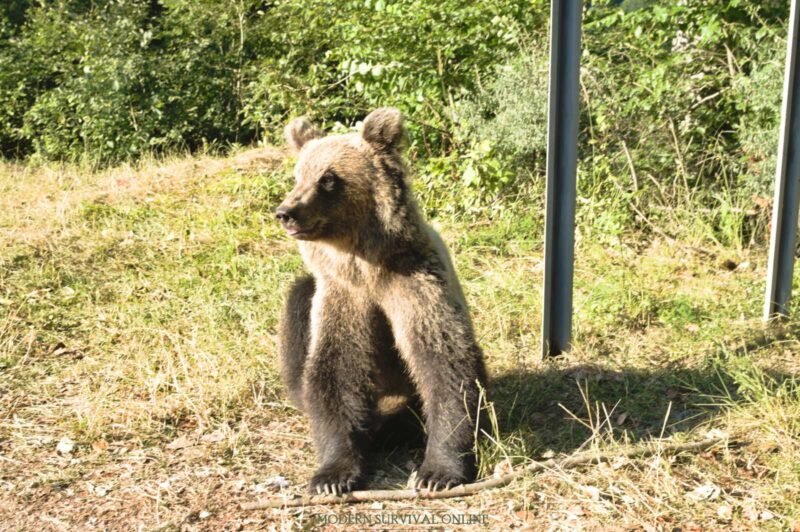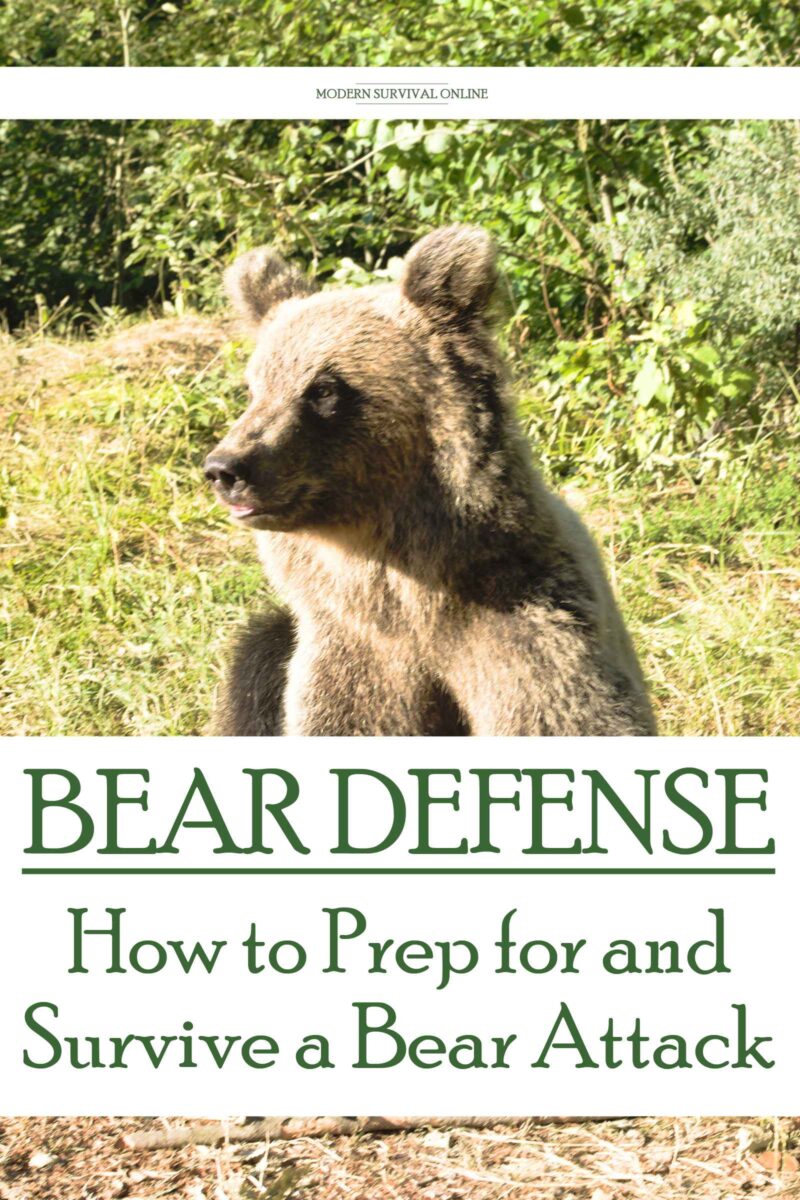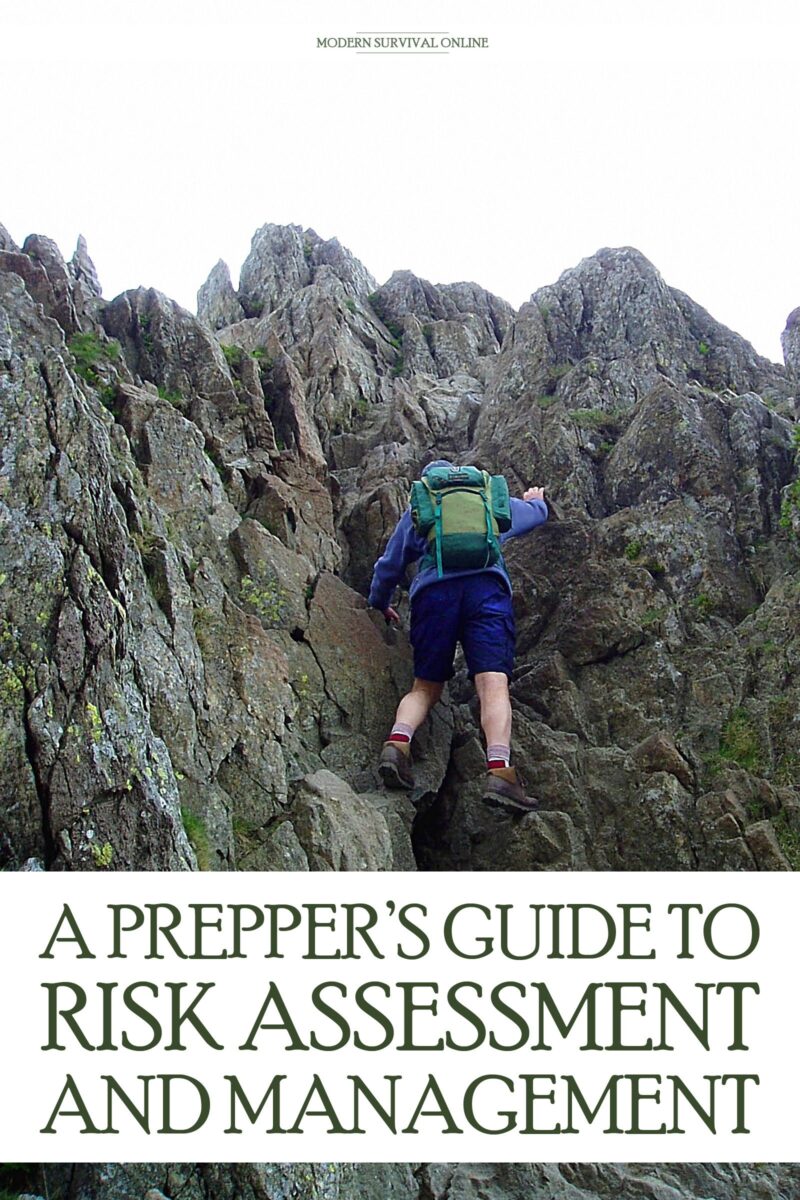When you see the phrase risk assessment, it probably conjures up visions of stuffy analysts, lawyers and OSHA types fussing and fretting over a problem that would be easily solved if only they would get out of everyone’s way.
Chances are you aren’t in the business of risk assessment, at least professionally, but if you are reading this article I can assert with confidence that you are personally in the business of risk assessment. That’s because you are a prepper!
Prepping, by nature, is the practice of assessing risks and threats that might assail your daily life and managing them accordingly.
This is typically done by developing personal skill sets to be ready for crisis situations and also accumulating contingency supplies and equipment to help you do the work that needs to be done in order to obtain a good outcome, whatever might have befallen you and your family.
It might be funny if it has never occurred to you before that risk assessment and management is a skill set all its own, and one that is obviously worthy of development the same as self-defense skills, land navigation skills or anything else we practice as components of a prepper lifestyle.
By improving your risk assessment skills you will refine your solutions to theoretical problems, reduce wasted effort, and therefore save energy, and in the long run save both time and money.
This article will help you sharpen your pencil and your wits when it comes to risk assessment.
Get the Best Protection against the Most Likely Threats
Risk assessment might sound like a fancy commercial sector job, but it is really just a set of procedurals.
Risk assessment is predominantly about observation, about collecting and collating data accurately and then sorting it in a meaningful way so that you can take action based on what the data is telling you.
Believe it or not, you already use risk assessment skills every, single day and likely have been since you were old enough to have any memories at all.
After performing the calculus of risk assessment, we know how cautiously we should proceed if we proceed at all concerning the task at hand.
For instance, if you have the choice of two routes to take to your destination, one taking 30 minutes going by a safe, known and will traveled path and the other taking 25 minutes but one that whines through the scummy, bad part of town, which one are you likely to take?
If you are like most people, you instinctively choose the safer route because the time savings of the dodgy route is not so great and the pressure not so high that we need risk it at all.
That is risk assessment, and subsequent management actions staring back at you.
Of course, that is a comparatively easy example, and assessing risk against both known and unknown crisis events and full-blown SHTF situations sounds significantly more involved and more difficult.
Although there are certainly more moving parts and more action items you’ll have to consider, it is actually no more difficult so long as you are starting off with good data.
Just like the example of driving to your destination above, we want to prepare as well as we can against the most likely threats using the information we have at hand.
Invariably, our knowledge will be imperfect and our own perceptions may taint our assessments, but so long as you are thinking clearly it is not difficult to prepare for realistic threats to your safety and the safety of your loved ones.
Elements of Risk Assessment
One thing to keep in mind as we go forward in this exercise is that risk assessment is always relative. Put another way, the total context is everything. Certain threats that might be pressing and frequent for some people could be of less than no concern or virtually unheard of for others.
Similarly, the unique differences in individuals’ lifestyles, family and living situations, overall health and fitness, and more will tip the scales one way or the other accordingly depending on the event and question.
Risk assessment is about more than just learning how various events could happen in a vacuum and imperil you; it is about learning how these events will affect you as you are in your life and location, analyzing the interplay of those factors, and then taking steps to mitigate possible harm.
Below is a list of major lifestyle and circumstantial factors that you should assess against the context of a threat:
Activity
As always, the specific activity and your overall level of activity will influence various risk factors. Staying at home is generally safer than going out when trouble is afoot or a natural disaster is imminent, but there are risks of plenty inside your own home.
Similarly, if you lead an exciting, high adrenaline and high impact lifestyle you’ll face a different set of risk factors than if you are a sedentary shut-in.
Fitness, Health, Ability
One of the chief intangibles concerning risk in all endeavors is the fitness, health and ability of the individual.
People who are strong, fit and healthy in mind and body are more resilient and harder to kill across pretty much every domain compared to people who are weak, out of shape and sickly.
It is true that some events are so momentous and dangerous that overall fitness has very little to do with the outcome, but for most situations where you get a vote and what happens to you, personal health is a major factor.
Also consider the health and wellness of your family members and dependents. If you are taking care of people who are infirm or less able, that is going to heavily influence your decisions.
Location
Your geographic location will determine what events are more or less likely. Specifically, various natural disasters are endemic to some locations but not others, while ubiquitous events may be more likely in some places than elsewhere.
Similarly, human-caused mayhem is invariably more common and usually more destructive and densely populated areas.
A thorough assessment of your location and the various threats that are likely or even plausible will do much to restrict your management procedures to realistic situations.
Weather
The overall climate and current weather where you are is a risk factor unto itself one way or another. Exposure, especially to cold weather, is a reliable killer in every kind of survival scenario.
Similarly, being out in the hottest temperatures during the daytime and most especially if you are forced to be active is a great way to get heat stroke.
No matter what you are doing and no matter what other threats you are facing weather will always be a factor and potentially a major threat unto itself.
Other Conditions
Understanding specific conditions attendant with the situation goes a long way towards risk management.
For instance, you might be driving to flee from an ongoing event. Are you driving on a paved road or a winding dirt road going around the mountainside? Is the surface slick or dry
Conditions are another variable that can have far reaching and difficult to predict consequences. Even something like sustained high temperatures during a heat wave may precipitate an explosive outburst of rioting and looting if societal factors are already at a boiling point. Look for unseen connections and expect the unexpected.
Specific Threat
Specific threats are often times the most distressing and obvious risks we will have to assess and prepare against. This could be anything from a declared tornado warning in your immediate area to a stalker that has been harassing you or a loved one.
A violent mob of people or an oncoming, powerful blizzard could likewise be a specific threat that requires equally specific action to counter.
In short, you want to know yourself, know your family, know the terrain, know the overall situation and any additional variables that will impact your calculus. Once you have all of that in hand, you have everything you need to formulate a reasonable and a likely effective response.
Should You Prepare for Unlikely Threats?
In certain prepping circles, much is made of extreme or so-called “doomsday” prepping. This is prepping for events that are so incredibly destructive that they border on fantasy, things that have a one in a billion chance of occurring.
Some folks espouse an ideology that asserts one cannot call themselves truly prepared if they are not prepared for the worst that might be thrown at them, or in a similar vein, preparing for such an event makes you prepared for every lesser event that might occur.
Even if you have never heard of such events discussed in a serious context you are doubtless already familiar with them.
These are things like cataclysmic super-volcanoes, massive asteroid strikes, a legitimate nuclear exchange between superpowers, disintegrating bursts of cosmic radiation and so on.
You might also throw in half fantastical notions like zombie uprisings into the mix.
Frankly, you can make a good argument for preparing for the unexpected, but at some point you have to ask yourself what it is you hope to survive.
Common natural and man-made disasters are incredibly destructive and all inspiring to behold, but apocalyptic events are just that, apocalyptic, and chances are few if any people in the affected area will survive.
Your chances of survival might boil down to luck or providence as much as anything.
This is not to say we shouldn’t get ready for such an event, but I would caution current and new preppers to be wary of getting sucked in to such fantastical notions.
In short, you can make an excellent argument that investing time, money and effort into mitigating the risks of a one in a million or one in a billion occurrence is wasteful when you are far more likely to be waylaid by more mundane events.
Getting ready and covering your bases with basic skills and acquisitions is usually enough to prepare you for surviving the aftermath of an apocalyptic event assuming of course you do survive.
Begin With the Most Common Threats
In the section below you’ll find a variety of both natural disasters and man-made crises that you might have to deal with.
Depending on where you live, your lifestyle and other specifics about your circumstances these events may be significant and endemic threats or so rare as to hardly be worth worrying about.
Similarly, there are events that might be entirely relevant to your life that aren’t featured on this list. That’s okay.
Consider the following entries as archetypal examples for how you should assess your life for vulnerabilities and then act accordingly.
Natural Disasters
Flooding
Ounce for sodden ounce, flooding is probably the most common and widespread natural disaster that occurs around the world globally. Flooding is especially insidious because any place that it can rain it can flood if conditions are right.
Flooding causes widespread devastation by destroying structures, inundating what remains and spreading contagion far and wide. Moving water is an extremely powerful force and can easily sweep away vehicles and drown people.
Flooding is always a concern, but is especially worth worrying over if you live in a low-lying area, coastal region or anywhere near a river or large lake.
These areas are especially prone to devastating flooding, and once every century or two, you’ll have a major flood event that can completely change the landscape.
There is very little you can do to protect yourself against flooding except get away before the water’s rise too high.
With enough warning, proper preparation and quick action it is possible to erect flood resistant dams made out of sandbags, dirt or even fillable aqua-dams that could potentially save your property when everything else around it is underwater.
However, if you live on high ground or in an area that is typically dry you’ll have less to worry about from flooding.
The best thing you can do to prepare for a flood event if you live in a vulnerable area is to have a plan of egress to high ground near your home and away from the area so that you can seek shelter no matter where you happen to be when the water starts to rise.
Hurricanes
Hurricanes are among the most powerful storms in nature, and can severely affect entire regions with punishing winds, absolutely biblical amounts of rainfall, destructive storm surge and all of the attendant effects that occur when society is flipped completely upside down.
The most powerful hurricanes that have struck densely populated regions are nothing short of legendary in their destructive effect, and you never know if your number is going to come up year to year when hurricane season draws close.
Generally, only people living on coastal regions have much to fear from hurricanes, though these monster storms are capable of making life difficult and even sowing surprising destruction many dozens or hundreds of miles inland.
To make matters worse, hurricanes are capable of spawning tornadoes, often in many multiples, which are disasters under themselves.
Except in the rarest of situations if you live a couple of hundred miles away from the coast, you won’t have much to fear from hurricanes except potentially for flooding.
The worst effects occur when the hurricanes are still strong immediately after coming ashore after building up strength out on the open ocean. If you do live near the coast, however, you must have a bulletproof plan for sheltering in place if evacuation is not going to be your constant policy.
Tornadoes
Tornadoes are another extraordinarily powerful storm, and ones capable of generating the fastest sustained winds out of any storm on Earth.
Tornadoes are dramatic and can emerge from suitable storm systems rapidly with little warning and there are more than capable of carving entire towns off of the map.
Depending on the intensity of the tornado, they can inflict substantial damage to sturdy structures or completely flatten anything less than a hardened building while carrying away loaded train cars. These are serious events!
Tornadoes can occur anywhere on Earth but are most likely to take place in the United States, specifically a series of Midwestern states known as Tornado Alley. Just because you don’t live in this area doesn’t mean you are free from tornado risk, however.
Preparing for a tornado is a matter of obtaining suitable shelter as rapidly as possible. Depending on the construction of your home, this might not be in or near your domicile.
Mobile homes, vehicles and flimsy structures offer no protection at all, while the best protection comes from an underground shelter in the form of a basement or dedicated tornado shelter.
Most towns and cities, especially those in tornado prone areas, designate specific rooms in most structures or even entire buildings as tornado shelters, those being structures capable of withstanding even the strongest known storm events.
A good readiness plan is a matter of knowing at all times where your nearest shelter point is in tornado season, and taking steps to alleviate specific vulnerability in your home if it is not capable of withstanding high winds.
Blizzards
A blizzard is a sustained period of substantial snowfall, typically accompanied by extremely low temperatures and often high winds as well.
Although not as spectacular as some of the other more destructive natural disasters on this list, blizzards are nonetheless extremely costly in terms of money and lives year in and year out, and create many second and third order problems as they bring entire sectors of society to a grinding halt.
If you cannot get out of your home or travel safely, you cannot obtain supplies or provisions, get medical attention if required and a host of other errands or tasks that are required for day-to-day living.
Preparing for blizzards means considerable contingency planning and the accumulation of substantial amounts of supplies, particularly those required for heating of your home.
As you might imagine, blizzards are more common in the colder regions far from the equator, but it is not out of the question that they might occur in more temperate zones.
Every once in a blue moon blizzards can even occur in places where you might least expect them as residents of Texas will tell you.
Blizzards that occur in unusual or statistically improbable areas are oftentimes worse than the others as the residents are completely unprepared for the event and entire towns and cities unable to cope with a host of problems, everything from ice covered roads to frozen and burst pipes.
These events are mercifully quite rare far from cold regions, thankfully, but if you live in one of these chillier climates you must be prepared for blizzard conditions on a yearly basis.
Earthquakes
Earthquakes are another event that is difficult to prepare for and it nearly impossible to detect before it occurs.
Earthquakes occur all the time pretty much everywhere, but most of them are so weak that they are imperceptible to human senses.
More potent earthquakes may register as anything from a slight tremor that rattles dishes in your cabinets all the way up to positively cataclysmic rolling, cracking and shaking of the very ground beneath your feet.
Powerful earthquakes are incredibly destructive and disruptive, shattering streets, toppling buildings, severing sewer and water lines and sending power poles tumbling and crackling to the ground.
Though these monster quakes can technically occur anywhere they are far more likely to occur near and affect areas close to major fault lines.
If you live around one of these fault lines, near volcano ranges or then a couple of hundred miles of either you should be prepared for a major earthquake event.
Although there is not much you can do to protect yourself at the instant except get beneath something sturdy that will hopefully shield you from falling debris, a family emergency plan is a must for dealing with the aftermath.
Tsunamis
A tsunami is a massive series of waves caused by the enormous displacement of water, typically occurring and originating from the open ocean as the result of an undersea earthquake, landslide, volcanic event or occasionally man caused activity like the detonation of a nuclear bomb.
When a tsunami rushes ashore it bulldozes absolutely everything in its path through the sheer might of moving water and is among the deadliest and most destructive natural disasters on Earth.
Tsunamis may sometimes be detected ahead of time as a result of earthquake monitoring or other sensors, but they are just as likely to occur with virtually no warning.
Being caught in the open or on the ground floor of a flimsy building near the shore is a veritable death sentence when a tsunami occurs.
If you live on a coastal area or spend much time on the coast you must be prepared for an immediate response to a tsunami warning, particularly if you’re in the most vulnerable and tsunami prone areas.
However, if you live more than a few miles from the shore chances are you have very little to fear if anything from tsunamis, although folks who live on or near the largest lakes must still be cautious because massive displacements of nearby hills or mountains into the lake, if applicable, could trigger a small-scale tsunami near the shore.
Man-Caused Disasters and Events
Rioting
Rioting is an unpredictable, chaotic and ever-increasing threat as we go into the 21st century. Mob mentality gives way to danger and widespread destruction in the form of looting, arson assault, murder and occasionally kidnapping.
Rioting can be difficult to pin down or predict, as anywhere you have large groups of people you potentially have the makings of a riot, but there are guidelines that may be useful.
First, rioting most typically occurs in densely populated areas. Times of civil unrest, political turmoil or classist violence founded on any number of factors may lead to riotous behavior, behavior which can then be fomented and even directed by individual, organizational or state scale actors.
Areas develop a reputation as riot prone based on the response of law enforcement to initial incidents as well as sustained political or social activism whipping people into a frenzy for one cause or another.
These factors are not difficult to detect, and if you live in any area that is prone to writing you must be ready to react at a moment’s notice and get clear of a violent crowd before it turns into a full-blown mob.
Similarly, wherever you happen to be, if you should come upon a large group of unruly people you must get around or away from them as quickly as possible. In general, smaller, rural communities that are mostly homogeneous, culturally, are far less likely to endure rioting.
House Fire
House fires are among the most common and most destructive disasters that could befall anyone, and are particularly threatening because they strike and destroy what is most precious to you and when you are most vulnerable. Any structure can burn, and a burning structure will destroy everything and everyone within it.
House fires can occur anywhere and at any time in any season, but they are more likely to occur in a home that is poorly maintained, has old and antiquated wiring or anytime that sources of intense heat or open flame are being employed in the home.
If you have a gas or traditional fireplace, smoke, or do any cooking in your home the chances of a house fire are dramatically increased.
This is one event that every, single person must work hard to mitigate and manage.
Family fire drills, a comprehensive fire response plan including the installation and maintenance of fire extinguishers and fire suppression or mitigation measures in and around the home are absolutely essential in order to prevent a house fire.
Terror Attack
For as long as humans have been on earth, they have been attacking each other for the purposes of sowing fear in order to further political and cultural objectives.
Unfortunately we are not exempt from this phenomenon in the 21st century. Enemies both from within and without may use terror tactics to get what they want, or just to strike back at the people or groups that they have perceived as wronging them.
Typically occurring in the worst possible places at the worst possible times, terror attacks are a deadly facet of modern life.
Typically occurring in populated areas in places packed with virtually defenseless civilians, there is a non-zero chance that these can occur in smaller, out of the way settlements or less crowded venues.
A terror attack may be a combination of any direct action tactic, including gunfire, explosives, chemical weapons, vehicle mowdown attacks, hijackings and more.
Avoiding a terror attack is mostly a function of managing risk by avoiding the most likely targets when direct action from a specific threat is most likely and taking immediate action to get out of the hot zone should one occur at your location or nearby.
If you live in a major city you’ll have to be on your toes, but people living in less populated areas usually have less to fear.
Economic Crisis
An economic crisis is not very flashy, but no less deadly or disruptive than any other man-made catastrophe.
When the economy grinds to a squealing halt, or hyperinflation makes your money worthless as anything except kindling, the entire nation will be plunged into a vicious cycle of want and lack that will result in mass waves of homelessness, dispossession and violence.
No matter where you live, no matter what your lifestyle, no matter what you do for a living an economic crisis has the potential to plunge you and your family into turmoil.
Truly preparing for an economic crisis requires more than just saving. You’ll need to get ready for such times by saving up money and liquid assets, of course, but also by accumulating survival necessities for sustainment living, things like food, water and so forth.
This more than most other major disasters on this list is one that is disproportionately likely to affect all of us, regardless of lifestyle and other factors. Underestimate an economic crisis at your own peril!
Industrial Accident
Industrial accidents can take many forms, and none of them are good though some are capable of far reaching consequences.
An industrial accident could be anything from an explosion to the inadvertent release of dangerous, even deadly, chemicals into the air or water supplies.
Major historical events have killed hundreds upon hundreds and sickened or crippled countless thousands more around the world.
Obviously, if you live near any industrial site responsible for the handling or refining of chemicals, or one that uses dangerous chemicals in manufacturing processes, you’ll need to be on your toes.
Even so, prevailing winds, above ground water features and groundwater sources might mean that contamination could go significantly farther than the immediate area around the site of the accident.
Luckily, if you live in North America and much of Europe precautions will be in place for alerting local populaces about significant accidents but you’ll still need to be prepared to either shelter in place or evacuate as appropriate depending on the type and severity of the accident.
If you don’t live anywhere near industrial sites you won’t have much to worry about, although the odd tanker truck crash or train derailment could still contaminate your area with the same chemicals.
Conclusion
Risk assessment is an essential part of prepping, and only by the proper assessment and attendant management of risk can we make the best use of our time, efforts and investments to reduce the chances of a bad outcome when dangerous conditions exist as a result of disaster, be it man-made or natural.
Risk assessment is not difficult to learn but practicing it continually and accurately takes practice. Use this article as your guide and take whatever steps are necessary to fortify your life against the unexpected.
via Modern Survival Online https://ift.tt/3wPUODQ
















